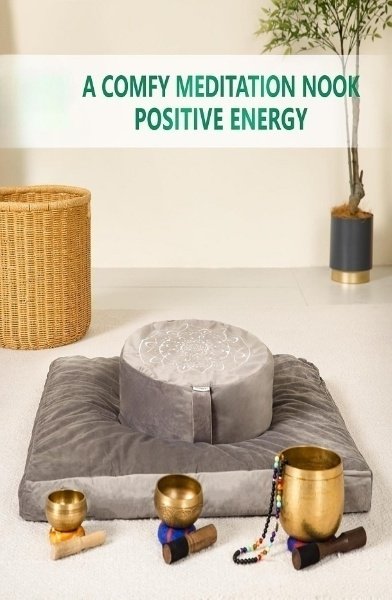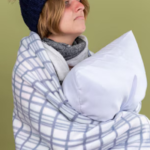Meditating with comfort and proper posture can be a challenge, especially if you’re just starting out or dealing with any physical discomfort. That’s where knowing how to use a meditation cushion can make a difference. As a regular meditator who has tried a variety of cushions, I’ve seen how they can transform a meditation session, especially when used correctly.
Introduction to Meditation Cushions
Meditation cushions serve as essential tools for both beginners and experienced meditators, helping to improve posture, comfort, and focus during meditation. With the right cushion, you can enhance your practice, reduce physical strain, and deepen your connection to the experience.
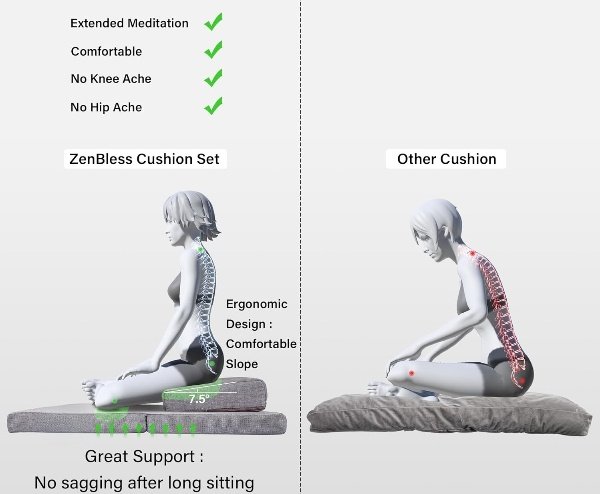
Let’s dive into the world of meditation cushions, explore their benefits, and discuss how to choose and use them effectively for optimal support.
A. Understanding the Role of Meditation Cushions
Meditation cushions are not just accessories; they are essential aids designed to support your body in a comfortable, balanced position. By gently lifting the hips and providing a stable base, a meditation cushion allows for better posture alignment and weight distribution, reducing pressure on the knees, hips, and back.
B. Why Proper Cushion Use Matters for Comfort and Focus
Proper cushion use promotes a more relaxed, focused meditation session by minimizing discomfort. Sitting directly on the floor can lead to strain, poor posture, and distractibility. A well-chosen cushion helps you avoid these issues, enabling you to meditate comfortably and with greater ease, which is essential for staying engaged in your practice.
C. Benefits of Using a Meditation Cushion for Beginners and Experienced Meditators
Meditation cushions offer multiple benefits regardless of your experience level:
- Enhanced Comfort: Helps to prevent numbness, joint pain, and back strain, especially in longer sessions.
- Better Alignment: Encourages proper spinal posture, facilitating deep breathing and relaxation.
- Increased Focus: By minimizing distractions caused by discomfort, cushions allow meditators to stay present.
Using a meditation cushion properly is an investment in the quality of your practice, providing the foundation for a more rewarding, focused meditation experience.
Choosing the Right Meditation Cushion for Your Needs
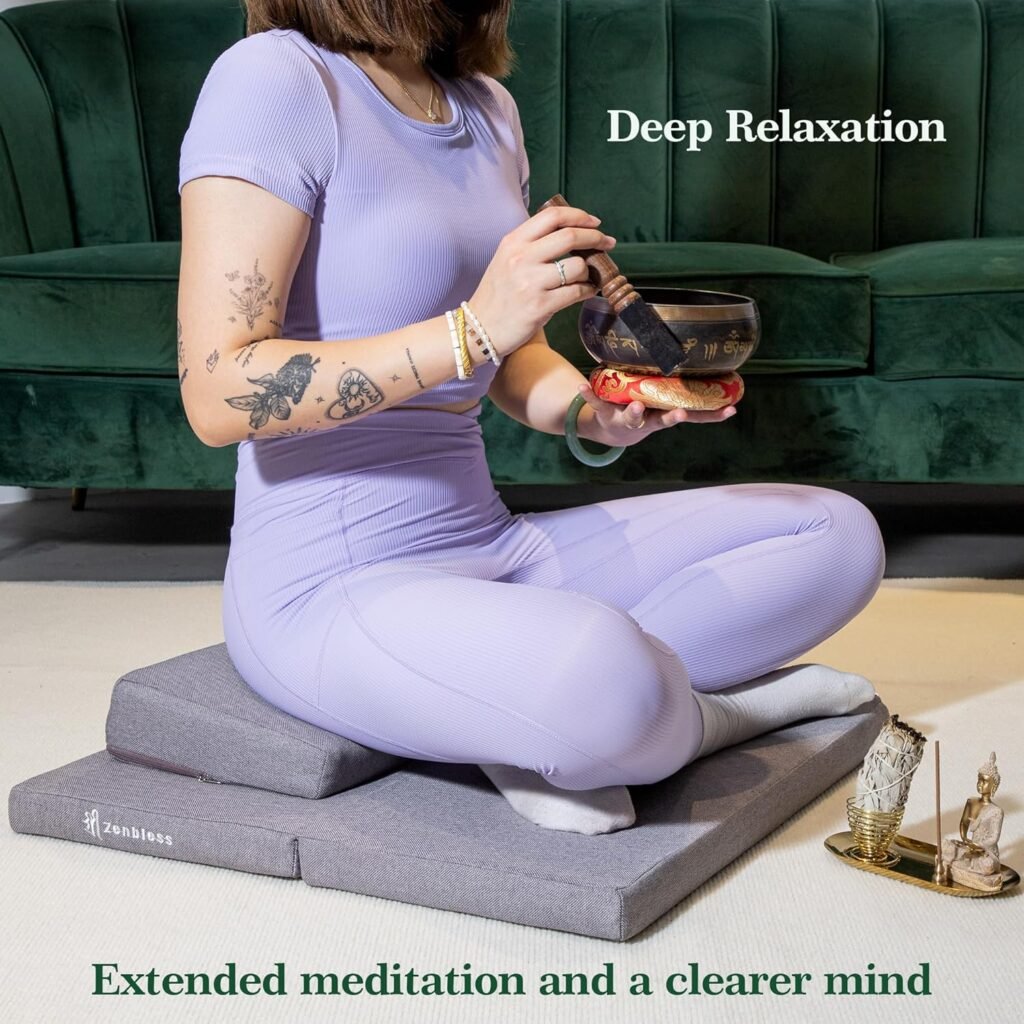
A. Types of Meditation Cushions
Selecting the right type of meditation cushion is crucial, as each design caters to different needs and postures:
1. Zafu�cushion
The traditional round cushion, often filled with buckwheat hulls, elevates the hips and allows the legs to rest comfortably. This type is ideal for cross-legged positions.
2. Zabuton
A flat, rectangular cushion typically used as a base under a zafu. Zabuton cushions provide added comfort for the knees and ankles, especially in longer sessions.
3. Crescent Cushions
Shaped to support the thighs and hips, these cushions help to tilt the pelvis forward slightly, improving posture and reducing strain.
4. Bench Cushions
Meditation benches are suitable for those who prefer a kneeling posture. They provide elevation for the hips, taking pressure off the knees.
B. Selecting the Right Shape and Size
Choosing the right shape and size depends on your personal needs and preferred meditation posture. For example, a higher cushion works well for those with limited hip flexibility, as it elevates the hips and reduces strain on the knees. A crescent cushion may be more comfortable for those with tight hip muscles, as its contoured design provides natural support.
C. How Cushion Material and Filling Affect Comfort and Support

The material and filling of a meditation cushion significantly affect comfort and support:
Buckwheat Hulls
This firm filling adapts well to your body shape, providing stability and support. The weight keeps the cushion in place, making it ideal for those who prefer firmer seating.
Kapok Fiber
Lightweight and slightly softer than buckwheat, kapok offers a cushioned feel, although it may compress over time.
Memory Foam
Known for its adaptability, memory foam conforms to your shape, though it may lack the grounding effect of natural fillings.
Choosing a cushion with the right filling can greatly enhance your comfort, making it easier to settle into your practice.
Preparing to Use Your Meditation Cushion
A. Setting Up Your Meditation Space
Creating a dedicated, serene meditation space enhances the effectiveness of your practice. Place your cushion in a quiet, well-ventilated area with minimal distractions. Adding a blanket or a mat underneath can add extra comfort and warmth, especially in colder spaces.
B. Proper Cushion Placement for Various Poses
Where you place the cushion affects your posture and comfort. For example, place a zafu on top of a zabuton for cross-legged sitting to support both your hips and knees. In kneeling positions, a meditation bench or cushion positioned under the hips can help maintain a balanced posture.
C. Tips for Ensuring Optimal Height and Stability
The height of your cushion plays a significant role in maintaining alignment. As a general rule:
- Higher cushions are beneficial if you’re less flexible or have tighter hips, as they allow your knees to rest lower than your hips.
- Lower cushions work well for those with greater hip flexibility, providing a closer connection to the floor and a stable, grounded posture.
Testing different heights and arrangements can help you find what feels most comfortable and supportive for you.
Posture Essentials When Using a Meditation Cushion
A. Importance of Posture in Meditation
Good posture in meditation isn’t just about comfort; it’s also about enhancing breathing and focus. A straight but relaxed spine helps prevent fatigue and distractions, allowing for a deeper meditation experience.
B. Aligning the Spine for Better Breathing and Focus
Sitting with your spine aligned promotes better airflow, helping you maintain steady, rhythmic breathing. This not only enhances relaxation but also fosters a sense of calm, which is key to mindful meditation. Keep the head slightly tucked, shoulders relaxed, and chest open for optimal breathing.
C. Key Tips for Supporting Hips, Knees, and Lower Back
When using a meditation cushion:
- Hips: Sit towards the front edge of the cushion to allow for a slight forward tilt in the pelvis, supporting the natural curvature of your spine.
- Knees: Rest them at or slightly below hip level to reduce pressure on the joints.
- Lower Back: Maintain a gentle lumbar curve by engaging core muscles slightly, which helps to avoid slouching.
How to Use a Meditation Cushion for Different Sitting Positions
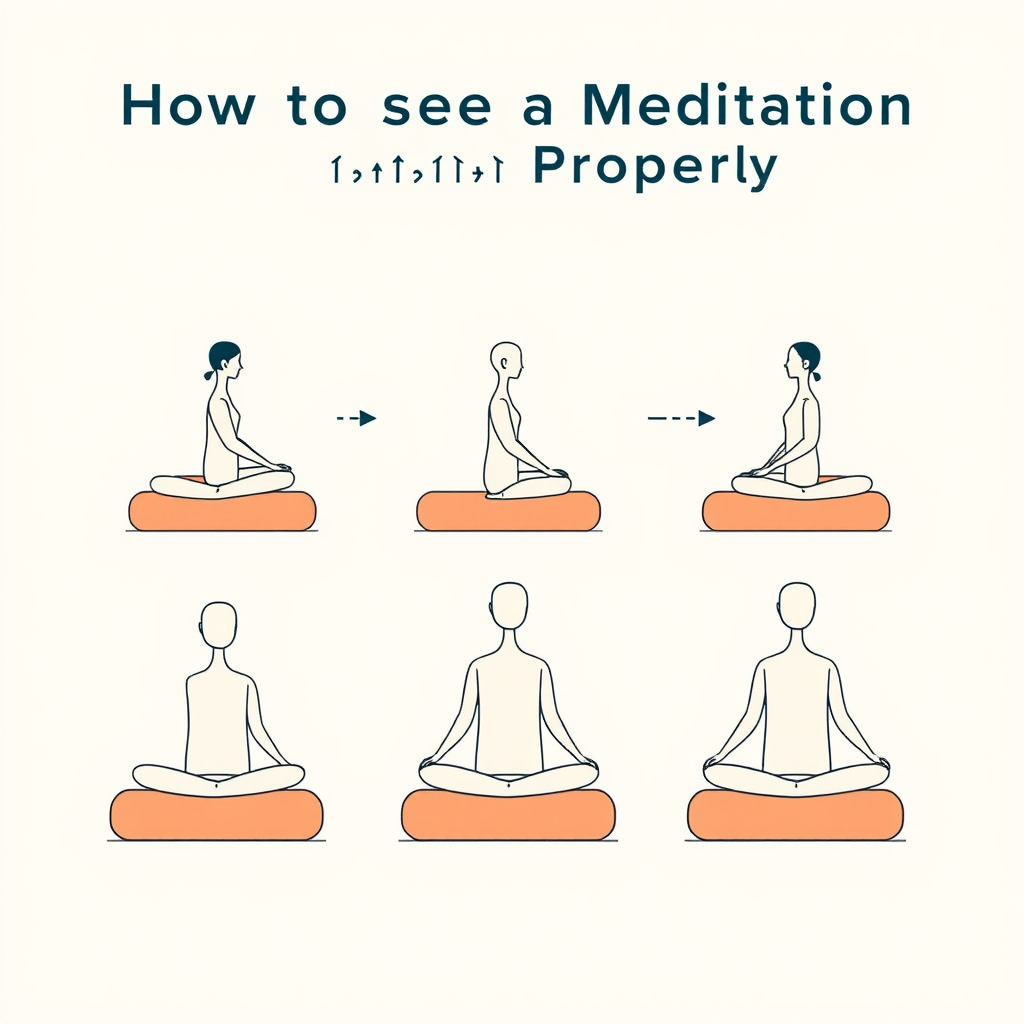
A. Cross-Legged Posture (Sukhasana)
Place the cushion under your hips, sitting towards the front edge to encourage a natural tilt in your pelvis. This position promotes relaxation in the knees and aligns your spine.
B. Half-Lotus Position
For a half-lotus, elevate the hips on a zafu, zabuton, or a crescent cushion. Position one foot on top of the opposite thigh, and let the other rest comfortably on the floor or zabuton.
C. Full Lotus Position
In full lotus, both feet are placed on opposite thighs. A higher cushion can be helpful here, especially for beginners, as it allows you to maintain an upright spine and reduces strain on the knees.
D. Kneeling (Seiza) Position
For the seiza position, use a meditation bench or a rectangular cushion. This kneeling posture is excellent for those who find cross-legged positions uncomfortable, as it aligns the spine and takes pressure off the knees.
E. Reclining Meditation Using Cushions
For reclining meditation, place a zabuton or large cushion under your back to support a gentle arch, promoting relaxation. Additional smaller cushions under the knees or head may enhance comfort.
How to Use a Meditation Cushion for Different Sitting Positions
Meditation cushions are versatile tools that cater to various sitting positions, ensuring comfort and proper alignment for your body. Let’s explore how to use a meditation cushion for some of the most common meditation postures.
A. Cross-Legged Posture (Sukhasana)
The cross-legged posture or Sukhasana is one of the most common sitting positions in meditation. To use a meditation cushion effectively in this position, follow these steps:
- Place your cushion under your hips to elevate them slightly above your knees, which helps open the hips and allows for a more relaxed sitting position.
- Sit towards the front of the cushion to maintain a slight forward tilt in your pelvis, supporting your spine’s natural curve.
- Relax your knees towards the floor and avoid forcing them down. A cushion provides support, helping your hips remain open without strain.
- Keep your hands gently resting on your knees or in your lap, and focus on maintaining a relaxed but upright posture.
B. Half-Lotus Position
In the half-lotus position, one foot is placed on the opposite thigh, while the other foot rests on the floor. Using a meditation cushion in this position provides better alignment and comfort.
- Place a cushion under your hips to slightly elevate them, ensuring your knees are comfortable and close to the ground.
- Position your foot on the opposite thigh with the other foot resting flat on the floor, ensuring your posture remains aligned.
- This posture is great for those who find full lotus too intense, as it allows flexibility while still offering support for your spine.
C. Full Lotus Position
The full lotus position involves crossing both legs, with each foot placed on the opposite thigh. This position provides the most stability for meditation but requires flexibility.
- Sit on a higher cushion to elevate your hips above your knees, which will allow you to cross your legs comfortably.
- Ensure your spine is aligned and keep your knees near or touching the ground. A higher cushion helps you achieve this without straining your hips or knees.
- Using a zafu cushion with a firm filling like buckwheat hulls offers stability and support in this posture.
D. Kneeling (Seiza) Position
The kneeling position, or Seiza, is often used for sitting comfortably on the floor, especially for those who find sitting cross-legged difficult. A meditation bench or kneeling cushion works best for this position.
- Place a bench or cushion under your hips to elevate them and reduce pressure on your knees.
- Keep your spine upright, and make sure your head is aligned with your neck and back.
- Use a zabuton or a small cushion under your knees to provide comfort during longer sessions.
E. Reclining Meditation Using Cushions
For those who prefer to meditate lying down or find it easier to relax in a reclined position, reclining meditation can be enhanced with the right cushions.
- Place a cushion under your knees to relieve pressure on your lower back.
- A zabuton or a larger cushion under your back offers support and prevents discomfort.
- Ensure your head, neck, and spine are aligned and that your legs are slightly elevated to foster relaxation during meditation.
Adjusting Your Meditation Cushion for Specific Needs
Once you’ve chosen a meditation cushion, adjusting it to meet your personal needs can further enhance your practice.
A. Modifying Cushion Height for Optimal Comfort
The height of your meditation cushion plays a critical role in your comfort during meditation. Adjusting the cushion’s height based on your flexibility and posture helps you maintain a neutral spine and a relaxed body.
- For tighter hips, a higher cushion will allow you to sit with greater ease, as it elevates the hips above the knees and reduces strain on the legs.
- Lower cushions are suitable for those with greater hip flexibility, as they allow you to sit closer to the ground, helping to ground your posture.
B. Adding Extra Support for Lower Back or Knees
Some meditators may experience discomfort in the lower back or knees. You can enhance comfort by adding additional support:
- Knee cushions can be placed beneath your knees when using a meditation cushion for sitting on the floor.
- A small lumbar cushion placed at the lower back can help support the natural curvature of the spine.
C. Adjusting Position Based on Body Type and Flexibility
Your body type and flexibility level should guide the adjustments you make to your cushion. Taller individuals or those with less hip flexibility may benefit from higher cushions, while those who are more flexible can usually opt for lower cushions.
Common Mistakes to Avoid with Meditation Cushions
While meditation cushions are incredibly beneficial, improper use can lead to discomfort or a decrease in effectiveness. Here are some common mistakes to avoid:
A. Sitting Too High or Too Low
Sitting on a cushion that is either too high or too low can cause discomfort. It’s essential to adjust the cushion height to support a neutral spine and promote relaxation.
B. Ignoring Cushion Stability and Firmness
Ensure your cushion is firm enough to provide adequate support. A soft cushion may not provide the necessary alignment, while one that is too hard can cause discomfort. Always test the cushion to ensure it feels stable.
C. Neglecting Body Alignment During Meditation
Good posture is crucial in meditation. Avoid slouching, which can restrict your breathing and reduce focus. Ensure your spine is aligned, your shoulders are relaxed, and your hips are comfortably supported.
Combining Meditation Cushions with Other Supports
A. Using Zabutons with Zafus for Added Comfort
A zafu (round cushion) is ideal for elevating the hips, while a zabuton (flat cushion) provides comfort for the knees and ankles. Combining these cushions is a popular method for creating a stable, supportive base.
B. Small Cushions for Extra Knee or Ankle Support
Small cushions can be placed under the knees or ankles when sitting in cross-legged positions, helping to reduce strain.
C. Meditation Mats for Enhanced Comfort and Grounding
A meditation mat beneath your cushion can add an extra layer of comfort and grounding, especially if you meditate on hard floors.
Using a Meditation Cushion for Guided and Group Meditation
A. Setting Up a Comfortable Group Meditation Space
If you’re participating in a group meditation, ensure each person has the right cushion and enough space for comfort. Offering a variety of cushion types allows individuals to choose based on their posture and needs.
B. Choosing the Right Cushion for Extended Sessions
For extended meditation sessions, opt for cushions with thicker padding or additional support features, such as adjustable height.
C. Adaptations for Outdoor Meditation
If you’re meditating outdoors, use cushions with water-resistant covers to maintain comfort in natural environments.
Benefits of Using a Meditation Cushion for Long-Term Practice
A. Reducing Strain on Joints and Muscles
Over time, a meditation cushion can reduce strain on your knees, hips, and back, making meditation more comfortable and sustainable in the long run.
B. Enhancing Focus and Mindfulness Through Proper Support
A well-supported posture enables deeper focus and mindfulness, which is essential for effective meditation.
C. Improving Consistency and Enjoyment in Meditation
With the right cushion, meditation becomes more enjoyable, leading to consistent practice and greater long-term benefits.
Caring for Your Meditation Cushion
A. Cleaning and Maintaining Cushion Freshness
To maintain your cushion’s freshness, regularly clean it by removing dust and fluffing up the filling. Follow the manufacturer’s care instructions for washing or spot cleaning.
B. Tips for Storing Cushions to Preserve Shape
Store your cushion in a cool, dry place to prevent deformation. Avoid leaving it in direct sunlight or damp environments.
C. Longevity Practices: When to Replace Your Cushion
Over time, the filling in your cushion may lose firmness. Replace it when you notice a significant loss of support or comfort.
Conclusion
A. Summary of Key Tips for Using a Meditation Cushion
A meditation cushion is an essential tool that enhances comfort, alignment, and focus. By selecting the right cushion and adjusting it to your specific needs, you can significantly improve the quality of your meditation practice.
B. Encouragement for Starting or Enhancing Your Meditation Journey
Whether you’re a beginner or an experienced meditator, using a meditation cushion is an investment in your practice. Start with the right cushion and posture, and you’ll experience the numerous physical and mental benefits of a mindful meditation practice.
Frequently Asked Questions
What is the best sitting position when using a meditation cushion?
The best sitting position depends on your flexibility and comfort. Cross-legged positions like Sukhasana or Half-Lotus are popular, but kneeling or reclining postures work too.
How high should a meditation cushion be?
The cushion should elevate your hips slightly above your knees for optimal alignment. Adjust based on your flexibility and comfort.
Can I use a regular pillow as a meditation cushion?
A regular pillow may not provide the support needed for proper posture. It’s better to use a specially designed meditation cushion.
What’s the difference between a Zafu and a Zabuton?
A Zafu is a round cushion that elevates the hips, while a Zabuton is a flat cushion used for added support under the knees.
How do I clean and maintain my meditation cushion?
Follow the care instructions on the label. Most cushions can be spot-cleaned, while others may require a gentle wash.
Are there specific cushions for people with back pain?
Yes, there are specific cushions designed for people with back pain, featuring contoured designs, adjustable firmness, and breathable materials to provide support and alleviate pressure. These cushions, such as orthopedic, memory foam, and lumbar support cushions, can help improve posture, reduce discomfort, and promote spinal alignment.
May Like To Explore More:

